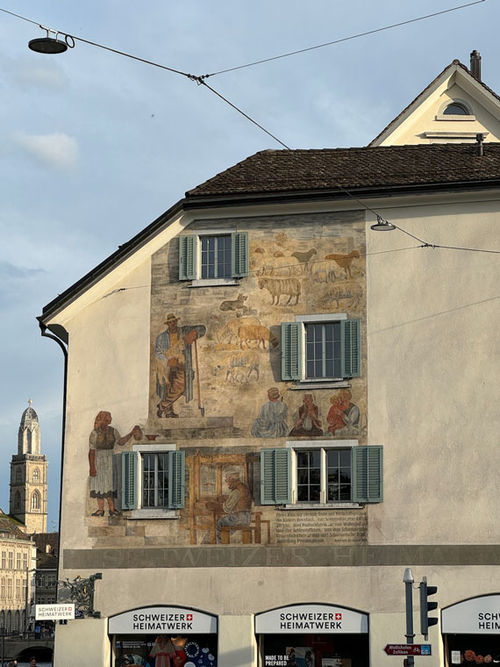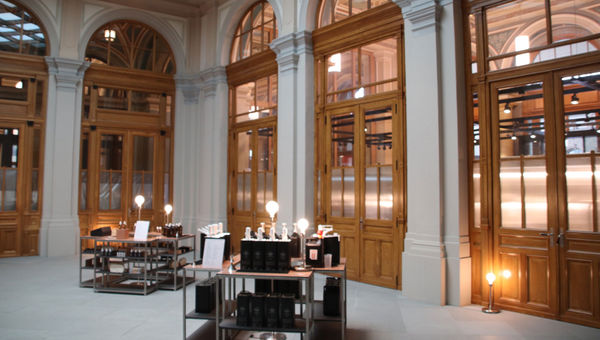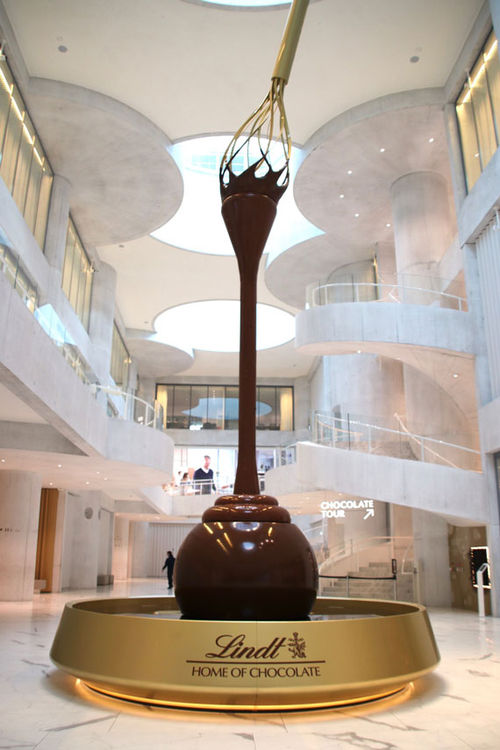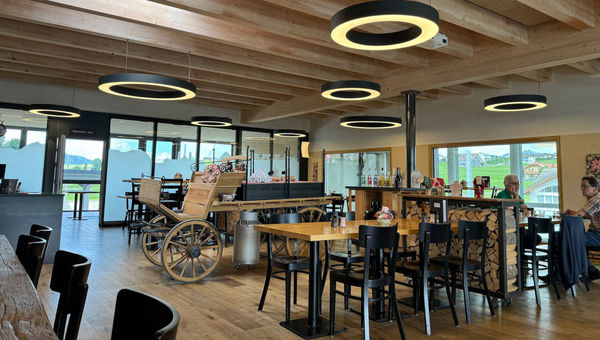Zurich is Switzerland's largest city, a modern, constantly evolving metropolis with a camera-ready Old Town that straddles the Limmat River. It is a world-renowned financial center that offers a lively arts-and-culture scene. All this, with the Alps as a backdrop.
So, yes, there are reasons to visit Zurich -- and not just as a ski add-on.
For my part, I arrived in June with a press group covering the annual Zurich Art Weekend, which meant seeing several special exhibits but with options to pack our days with even more viewings. The three-day event is frosting on the cake in a city of 50-plus museums, 100-plus galleries and around 1,200 pieces of art in public spaces.
Each member of our group was gifted a three-day Zurich Card. The card covers airport transfers and transport around town on an efficient system of trains, trams, buses and ferries. Further, it provides free entry to most museums and discounts at others. At about $33 for one day or $63 for three days, it also includes discounts on some tours, meals and shopping.
Constantly evolving
My head was turned by the constantly evolving Zurich -- specifically, a redevelopment project called Werkstadt Zurich, located in Altstetten, west of city center.
The made-up name Werkstadt is a play on words. It means "work" and "city." When spoken, it sounds like werkstatt, meaning "workshop."

A mural in Zurich's Old Town tells us this house was once the site of a business that processed wool using water from the Limmat River. Photo Credit: Nadine Godwin
Swiss Federal Railways owns and formerly used Werkstadt's buildings for equipment maintenance but is now nearly halfway through a 20-year project to repurpose the facility to accommodate innovative small businesses. Cultural spaces will be in the mix, too. The site covers roughly 10 acres; in places, railroad tracks are still underfoot.
Our group toured one of the buildings with Christian Kaegi, co-founder of Qwstion, a new Werkstadt tenant, as our guide.
Qwstion produces backpacks and similar products designed to be sustainable at every level. Its Werkstadt site is a repair shop. For its products, Qwstion uses banana fibers to create an Earth-friendly fabric branded Bananatex. It recently produced prototypes for Bananatex jackets, as well. (These banana fibers had previously been adapted for tea bags and Japanese currency.)
Kaegi said Werkstadt businesses are open to the public weekly on Factory Fridays. "The idea is to let people see how stuff is made" and to shop, but "these aren't discount outlets."
We sampled a workshop in Qwstion's space, making lanyards and key chains. Qwstion offers workshops for groups of up to 15 or, for larger groups, tours designed to provide "a look behind the scenes of urban production today," Kaegi said. For interested clients, inquire further at wecare@qwstion.com.

Flagship retail outlet for the Soeder soap-making business; the shop is at Zurich's central railroad station. Photo Credit: Nadine Godwin
An on-site factory, Soeder, a soap maker, offers workshops for groups on a request basis. Participants can make soap (bars or liquids) or attend scent workshops. Contact info@soeder.ch.
As with other Werkstadt tenants, sustainability informs Soeder's operations. The company said it always uses natural ingredients with no additives. Besides soap, products include lotions and shampoo. Liquid products are sold in refillable glass containers. The company uses recycled factory equipment.
Soeder's client list includes Swiss, Switzerland's flag carrier, plus hotels and restaurants.

The 30.5-foot fountain spouting chocolate in the atrium at the Lindt Home of Chocolate in Kilchberg. Photo Credit: Nadine Godwin
Chocolate and cheese, of course
A Lindt foundation, in 2020, opened the Lindt Home of Chocolate, a museum and research center designed to describe chocolate's origins, highlight its development in Switzerland and demonstrate the production of chocolate goodies.
Visitors can tour independently with audio gear, join guided tours and participate in bonbon-making workshops. All options involve tastings.
The facility -- featuring in its atrium a 30.5-foot fountain with 370 gallons of running chocolate -- is on the grounds of the Lindt & Sprungli factory in Kilchberg, accessible by bus or ferry from Zurich.
Outfitted in crisp, white chef's jackets and hats, our group poured and decorated chocolate bars and decorated truffles at the site's pristine Chocolateria.
Predictably, we eventually descended upon the museum's 5,380-square-foot chocolate shop.
Book museum tours for groups or individuals at info@lindt-home-of-chocolate.ch and book classes at chocolateria-ch@lindt.com.

The dining room at Milchmanufaktur, a cheese cooperative in Einsiedeln. Photo Credit: Nadine Godwin
Finally, there's cheese. I took the train to Einsiedeln, 25 miles from Zurich, home of Milchmanufaktur, a cooperative created in 2012 by 60 farmers to produce and sell their cheese and yogurt locally.
Agents can book groups electronically for a site tour, a cheese-making workshop, a meal at the on-site restaurant or a farm visit. They can do this by going to milchmanufaktur.ch, choosing English and then, under Experiences, clicking on Group Offers.
However, there are no options for individual English speakers to join a regularly scheduled tour. So I did the next best thing: I had lunch in the factory restaurant and ate lots of cheese.